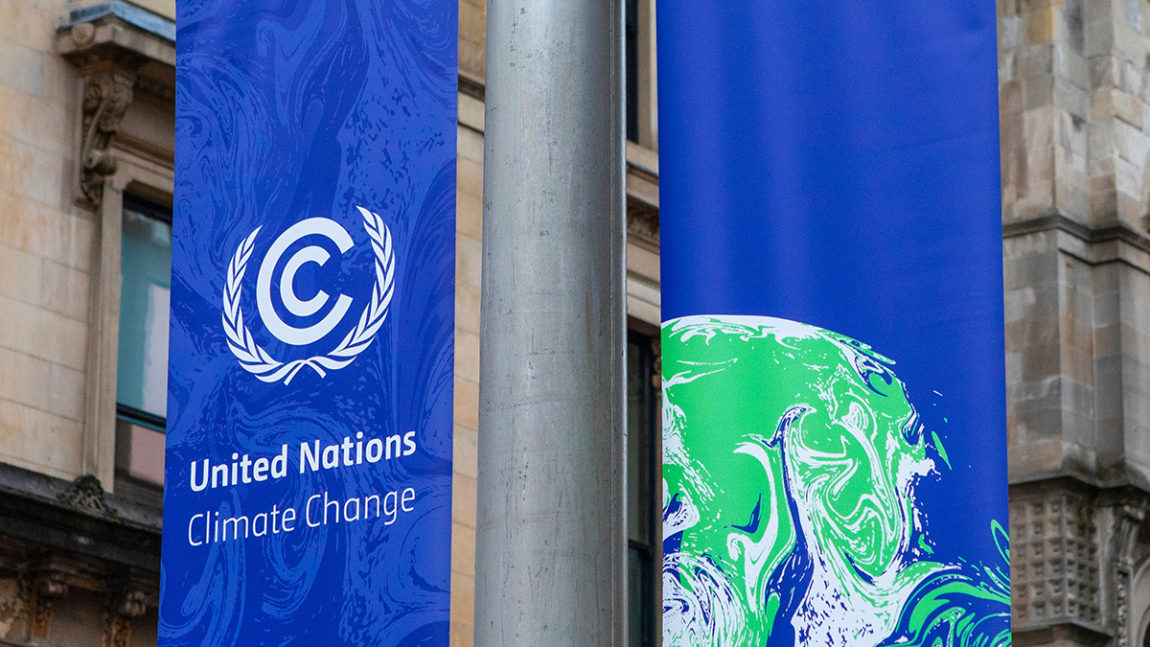This piece is the take of the Vasudha Foundation on the recent announcements made by the Honourable Prime Minister of India at COP 26.
For the last 3 decades, United Nations (UN) has been bringing together all the countries for global summits. During the last two decades, climate change has emerged as the highest priority for all world leaders. The confluence of economic progress along with a rapid expansion of the global population has come with a colossal environmental cost.The 26th session of the Conference of Parties(COP) aims to get governments to curb carbon emissions fast enough to keep global warming to 1.5 degrees Celsius above pre-industrial levels.
India is the world’s third-biggest emitter of greenhouse gases after China and United States.The participation of Indian Prime Minister Shri Narendra Modi is thus manifested as a crucial pillar in underscoring the importance of climate change measures. India has taken several steps like boosting renewable energy, energy efficiency, afforestation etc in recent years to lower the impact of climate change and to achieve the targets set under the Paris Accord 2015. However, the Honourable Prime Minister has overhauled the earlier targets with ambitious ones setting precedence for world leaders to follow suit.
Firstly, he announced a bold pledge of Net Zero Carbon Emission by 2070. The concept of ‘net-zero’ emissions became the focal point in the last one year with a spate of countries coming up with their targets. With this announcement, India joined the list of countries having a well-thought-out target in mind. Moreover, this target emboldens and underscores that India could well be 1.5 degree Celsius compatible.Secondly, India committed to reach 500 GW non-fossil based power capacity by 2030. In 2020, Central Electricity Authority (CEA) released a report on optimal generation capacity mix for 2029-30 that highlighted that India will be able to meet 525 GW of non-fossil electricity capacity. This is reasonably higher than the target exclaimed and the further breakup of the target can be seen in Figure 1.

Secondly, India aims to achieve 50 percent of its energy requirement to be met through renewable energy by 2030.. On this point, there seems to some confusion as to whether this represents capacity of generaiton to meet the demand, While we await for details in the updated NDC, the opinion of Vasudha Foundation is that the commitment could perhaps refer to generation/demand rather than capacity and it is based on the CEA’s optimal generation report.
As per the aforementioned report, the expected electricity demand in 2030 is around 2,325 BUs and of this, ~1150 BUs is expected to be met through renewable energy as shown in Figure 2.

Third, despite being a developing nation with a large population base, India has showcased commendable leadership in augmenting the economy-wide carbon intensity reduction target from 33-35% to 45% by 2030. As of 2016, India had already achieved an emission intensity to GDP of 23%, as reported in the BUR-III submitted by India to the UNFCCC.
Finally, India vows to reduce 1 billion tonnes of carbon emissions from the total projected emissions by 2030. This translates to an economy-wide absolute emission reduction of 3% for the period of 2005 to 2030, which again for a developing country is very ambitious and along with the other targets reflect the strong resolve of India to curb climate change. It is important that other countries come forward to be the change they want to see in this world.




